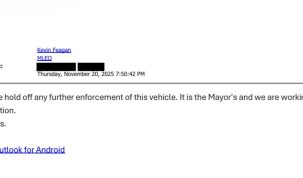By Cecilia Nasmith/Today’s Northumberland
Northumberland County has espoused greenhouse-gas emissions targets that align with the ones adopted by Canada following the 2016 Paris Agreement – to reduce GHGs levels to 30% below 2005 levels by 2030 and 80% below 2005 levels by 2050.
The plan to get there was reviewed at this week’s meeting of the Public Works Standing Committee of Northumberland County Council, as presented by Associate Director of Operations Adam McCue.
McCue pointed out that Canada is warming faster than the global average, with the number of frost-free days on the rise in Ontario. As for carbon-dioxide levels, the last time they were as high as their current level was three- to five-million years ago in the Pliocene Era.
“We are also seeing more extreme events – more intense storms, tornadoes now being more frequent in Southern Ontario – and the result of these significant events is taking its toll,” McCue added.
GHGs emitted by the county have three main sources – waste management, vehicles and buildings.
GHG emissions from waste-management service have fallen by 22% since 2005, largely due to increased capacity and efficiencies in recycling programs and diversion programs for such materials as styrofoam and clothing.
GHG emissions from vehicles have increased by 38% since 2005, largely due to the increase in the number of vehicles to provide forestry, roads and paramedic services.
GHG emissions from buildings have fallen by 34% since 2005, largely due to the decarbonization of Ontario’s electrical grid (such as the 2014 phase-out of coal-fired power generation), even though energy consumption in these buildings has risen by 17%. One key reason for this is the buildings that did not exist in 2005, including the new county headquarters, the Ontario Agri-Food Venture Centre and several shared emergency-services bases.
Overall, there has already been a 17% GHG reduction since 2005, though an additional 3,000-tonne reduction is needed by 2030 to meet that 30% goal (and an additional 15,000-tonne reduction by 2050 to meet that 80% goal).
The next step is to develop and implement a Climate Action Plan, whose recommendations will fall under two categories – mitigation and adaptation.
The first category is meant to find ways to reduce GHG emissions, such as a plan to electrify county vehicles, a strategy to capture methane from the Brighton Landfill and advocacy for member municipalities to develop Green Development Standards.
Adaptation recommendations will cope with impacts that have already occurred as a result of climate change and find better ways to go forward.
A draft Climate Action Plan will be presented to council early in 2023, along with the recommendation that the count hire a Sustainability Officer.
“This will be integral to the successful implementation of the Climate Action Plan recommendations,” McCue stated.























